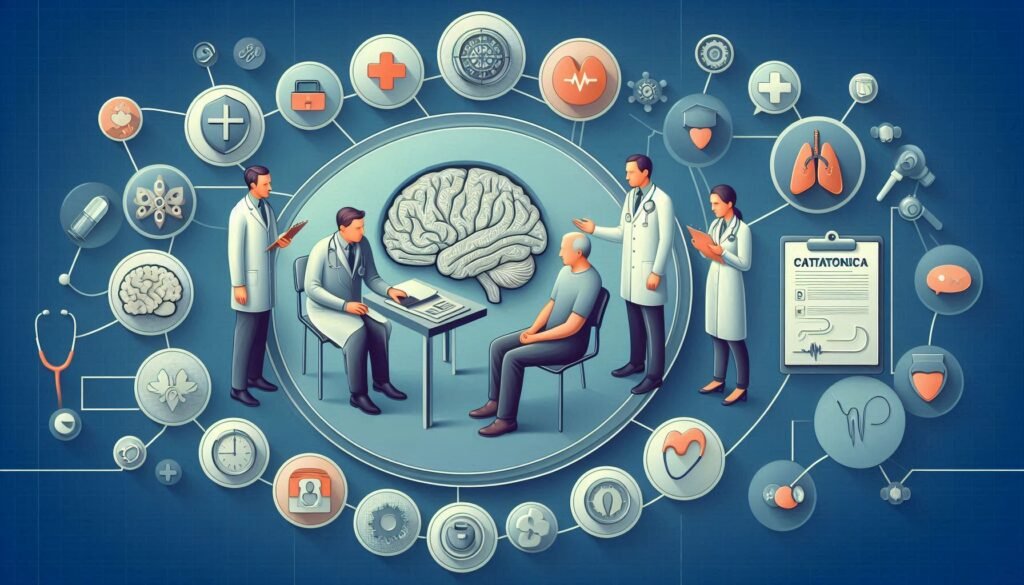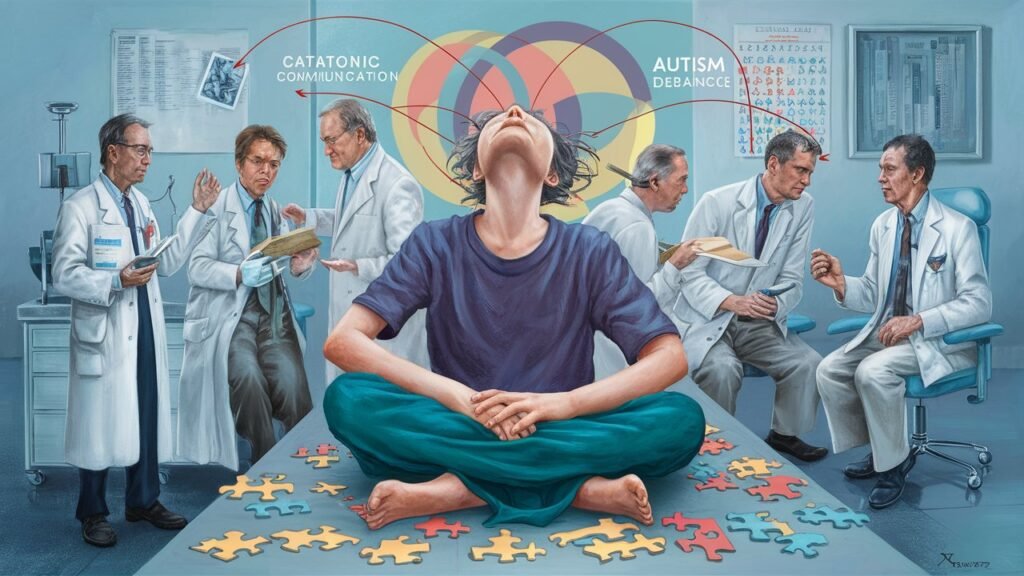Catatonia is a complex condition that can present significant challenges for healthcare professionals. Its varied symptoms, ranging from immobility to agitation, often leave clinicians stumped. In this intricate landscape, Consultation-Liaison Psychiatry emerges as a vital resource in the diagnosis and management of catatonia. This specialized field bridges the gap between psychiatry and other medical disciplines, enhancing patient outcomes through collaborative care.
Understanding how Consultation-Liaison Psychiatry functions in catatonia diagnosis can transform treatment pathways. By integrating psychiatric insight with medical expertise, C-L psychiatrists play an essential role in unraveling the nuances of this perplexing disorder.
As we delve deeper into the pivotal contributions of C-L psychiatry to catatonia detection and management, you’ll discover innovative strategies that empower interdisciplinary teams to provide optimal care for affected individuals. Join us on this journey to explore how these specialists are reshaping our approach to one of psychiatry’s most enigmatic presentations.

Understanding Consultation-Liaison Psychiatry: A Key Player in Catatonia Detection
Consultation-Liaison Psychiatry (C-L psychiatry) acts as a critical bridge between the psychiatric and medical worlds. This specialty focuses on evaluating and treating patients with coexisting mental health issues in medical settings. The role of C-L psychiatrists becomes especially crucial when catatonia is suspected, given its complex presentations.
Catatonia can manifest through a variety of symptoms, making it challenging to diagnose. Typical signs include stupor, mutism, or excessive motor activity without obvious cause. Recognizing these signs early is essential for effective intervention.
C-L psychiatrists bring unique expertise in differentiating catatonia from other conditions that may mimic its presentation. Their training enables them to assess not just psychological factors but also underlying medical issues contributing to the patient’s state.
Through collaboration with other healthcare providers, C-L psychiatrists enhance the diagnostic process by integrating diverse perspectives and knowledge bases—paving the way for timely treatment interventions tailored to each patient’s needs.
The Collaborative Approach: Integrating Psychiatric and Medical Expertise
The diagnosis and treatment of catatonia require an intricate balance of psychiatric and medical knowledge. This collaborative approach is essential for accurate identification and effective management. Consultation-liaison psychiatrists serve as the crucial link between mental health and physical care.
By fostering communication among various specialties, C-L psychiatrists facilitate a comprehensive understanding of each patient’s unique presentation. For example, they can identify underlying medical conditions that may contribute to catatonic symptoms, such as infections or metabolic disorders.
This integration ensures that patients receive holistic care tailored to their specific needs. Regular consultations allow for real-time updates on patient status and adjustments in treatment plans.
Moreover, interdisciplinary collaboration promotes shared learning among healthcare providers. It creates opportunities for education about catatonia’s complexities, ultimately enhancing the quality of patient care across all disciplines involved in the process.
Rapid Assessment Techniques for C-L Psychiatrists in Suspected Catatonia Cases
Rapid assessment is crucial for C-L psychiatrists when faced with suspected catatonia. Time is of the essence, as swift identification can significantly impact patient outcomes. Utilizing standardized tools like the Bush-Francis Catatonia Rating Scale (BFCRS) aids in recognizing characteristic symptoms quickly.
Initial assessments often begin with a thorough clinical interview, focusing on behavioral observations and patient history. This step helps differentiate between primary psychiatric disorders and medical conditions that may mimic catatonia. Observing physical signs such as immobility or mutism further refines the evaluation process.
In cases where diagnosis remains uncertain, a multi-faceted approach is essential. Collaboration with other specialists—such as neurologists or internists—ensures no underlying medical issues are overlooked.
Utilizing structured observation checklists allows C-L psychiatrists to systematically document findings, enhancing diagnostic accuracy and treatment planning while minimizing delays in care.
Navigating Complex Medical Comorbidities in Catatonic Presentations
Catatonia often presents alongside a range of complex medical comorbidities, complicating the diagnostic and treatment process. Patients may exhibit symptoms associated with neurological disorders, endocrine abnormalities, or infections that further cloud clinical judgment. This overlap can lead to misdiagnosis if psychiatric evaluation is not prioritized.
Consultation-liaison psychiatrists play a pivotal role here by integrating psychiatric insights within a broader medical context. Their training equips them to recognize signs of catatonia even when obscured by other conditions. They work closely with specialists to ensure all potential causes are explored.
The challenge lies in distinguishing primary from secondary catatonia amid these comorbidities. Effective assessment requires collaboration between various departments like neurology and internal medicine for comprehensive care planning.
Moreover, continuous education for non-psychiatric staff about catatonia’s varied presentations is essential. Empowered staff can facilitate earlier identification and intervention, ultimately leading to better outcomes for patients facing this complicated landscape of illness.
Education and Liaison: Empowering Non-Psychiatric Staff to Recognize Catatonia
Empowering non-psychiatric staff is crucial in the early recognition of catatonia. These professionals often serve as the first line of observation, making their awareness essential for timely intervention. Training programs can enhance their understanding of catatonic symptoms and behavioral cues that may go unnoticed.
Education initiatives should focus on the diverse presentation of catatonia, including motor disturbances, mutism, or unusual posturing. By familiarizing nurses and other healthcare workers with these signs, they become adept at identifying potential cases swiftly. This knowledge bridges gaps in multidisciplinary care.
Regular workshops and information sessions can reinforce this training while promoting open dialogue among teams. Encouraging a culture where questions about psychiatric presentations are welcomed fosters collaboration within medical settings.
Additionally, implementing clear protocols for reporting suspected cases ensures that all staff members know how to act when faced with such situations. This collective vigilance enhances overall patient care and supports effective management strategies tailored to individual needs.
Managing Diagnostic Uncertainty: The C-L Psychiatrist’s Role in Differential Diagnosis
Diagnostic uncertainty often complicates the clinical picture in catatonia. Consultation-liaison psychiatrists (C-L psychiatrists) play a crucial role in navigating this complexity. With their specialized training, they can differentiate between various psychiatric and medical conditions that present with similar symptoms.
A systematic approach is vital when evaluating a patient suspected of having catatonia. The C-L psychiatrist employs thorough histories and physical examinations to identify underlying causes or comorbidities. This ensures that disorders like neuroleptic malignant syndrome or autoimmune encephalitis are not overlooked.
Collaboration with other specialties enhances diagnostic accuracy. By engaging neurologists, internists, and emergency medicine professionals, C-L psychiatrists create a more comprehensive understanding of the patient’s condition.
Effective communication among healthcare providers fosters an environment where differential diagnosis can thrive. This collaborative effort leads to timely interventions tailored to each patient’s unique needs while minimizing potential misdiagnoses.
Facilitating Interdisciplinary Communication in Catatonia Cases
Effective communication is vital in managing catatonia cases, given the complexities involved. Consultation-liaison psychiatrists serve as bridges between psychiatric and medical teams. They facilitate discussions that clarify patients’ diagnoses and treatment plans.
Regular interdisciplinary meetings can enhance understanding among healthcare providers. These gatherings allow for sharing insights about catatonia’s clinical features, which may vary significantly across different disciplines. By discussing symptoms openly, teams can better identify unique presentations of the disorder.
Utilizing standardized communication tools is another effective strategy. Tools such as checklists or diagnostic algorithms help streamline information exchange among team members, ensuring everyone stays informed on patient progress and changes in condition.
Fostering an environment of mutual respect encourages collaboration. When all disciplines recognize each other’s expertise, it leads to more comprehensive care for patients with catatonia. This culture promotes a shared responsibility in managing complex cases while improving overall outcomes.
Ethical Considerations in C-L Psychiatry Approaches to Catatonia
Ethical considerations play a crucial role in the practice of consultation-liaison psychiatry, especially regarding catatonia. The complexity of this condition often requires rapid decision-making and intervention. Clinicians must balance the urgency of treatment with patient autonomy and informed consent, which can be challenging when patients are non-responsive or unable to communicate effectively.
Confidentiality is another significant concern. C-L psychiatrists frequently work within multidisciplinary teams, sharing sensitive information about patients’ mental health histories. Ensuring that all team members respect confidentiality while facilitating collaboration is essential for ethical practice.
Additionally, cultural competence comes into play. Understanding diverse backgrounds can influence how catatonia presents and how it’s perceived by both patients and healthcare providers. C-L psychiatrists must navigate these nuances respectfully to provide effective care.
There is an ongoing need for advocacy within hospital settings. Patients with catatonia may face stigma or misunderstanding from other staff members, necessitating efforts from C-L specialists to educate their peers about this serious condition.
Implementing Catatonia Treatment Protocols in General Hospital Settings
Implementing effective catatonia treatment protocols in general hospital settings requires a structured approach. First, it is essential to establish clear guidelines that healthcare professionals can easily follow. These protocols should include standardized assessment tools and criteria for diagnosing catatonia.
Timely intervention is critical. Initiating treatment promptly can significantly improve patient outcomes. Benzodiazepines are often the first-line pharmacological option, with electroconvulsive therapy (ECT) serving as an alternative for severe cases or when rapid response is necessary.
Collaboration among various medical disciplines enhances the effectiveness of these protocols. Regular interdisciplinary meetings allow teams to discuss complex cases and share insights on individual patient management strategies.
Training non-psychiatric staff about recognizing signs of catatonia ensures timely referrals to consultation-liaison psychiatry services. This multidisciplinary effort not only streamlines care but also fosters a supportive environment where patients receive comprehensive treatment tailored to their specific needs.
Future Directions: Enhancing C-L Psychiatry’s Impact on Catatonia Outcomes
As we look to the future, enhancing the role of consultation-liaison psychiatry in catatonia diagnosis is crucial. Advances in telepsychiatry and digital health can facilitate faster consultations, improving access to psychiatric expertise for patients presenting with catatonic symptoms.
Additionally, ongoing training programs for both psychiatrists and non-psychiatric staff will help establish a standardized understanding of catatonia. The integration of artificial intelligence tools could assist clinicians in identifying patterns associated with this complex condition more accurately.
Research initiatives focusing on biomarkers and neuroimaging techniques also hold promise. By correlating physiological data with clinical presentations, healthcare professionals may refine diagnostic criteria further.
Encouraging multidisciplinary teams to collaborate more closely will enhance patient care pathways significantly. Such partnerships are vital not just for immediate management but also for long-term outcomes in individuals affected by catatonia.
With these advancements, consultation-liaison psychiatry can continue to play a pivotal role in improving detection and treatment strategies for catatonics within various healthcare settings. The potential benefits are immense as we strive toward optimizing mental health interventions across diverse patient populations.


